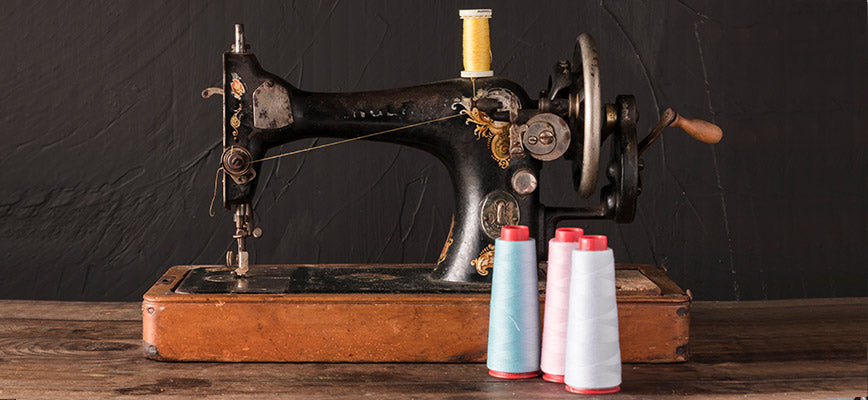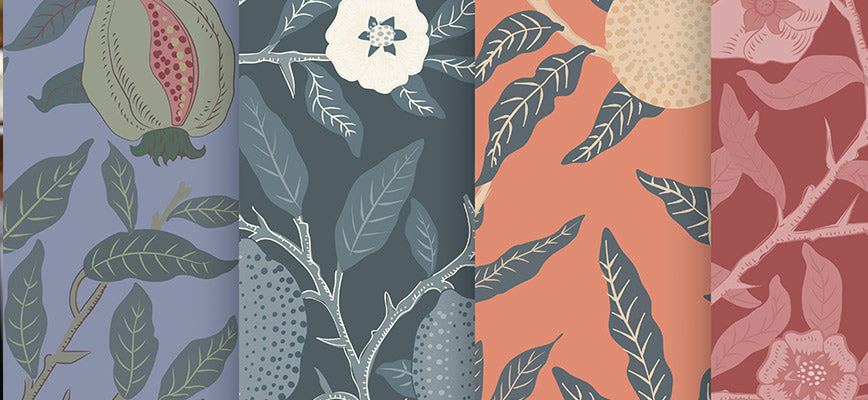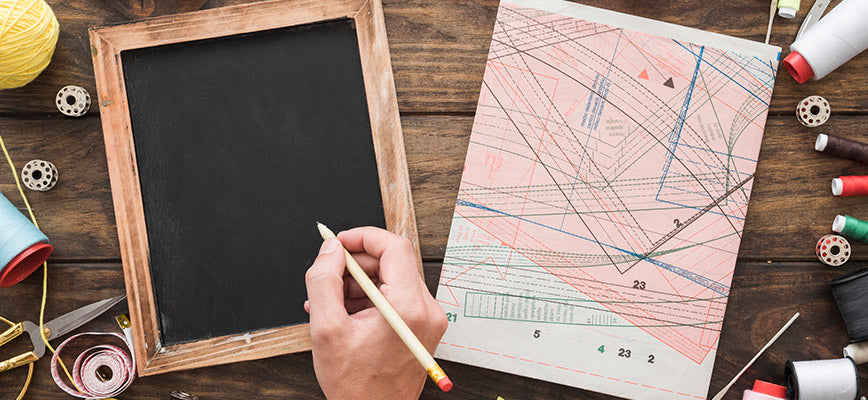Guide to Sewing Your Own Clothing
Alright, let's embark on an extended journey through the creative world of sewing, where every stitch is a step closer to unleashing your creativity..or frustration ;o
Grab a cup of coffee and let's dive right in.
First things first, let's talk about your trusty companion: the sewing machine.
Sewing Machine

Picture this: the hum of the motor, the gentle whirring of the needle, and the fabric gliding beneath your fingertips – it's like music to a seamstress's ears. Now, you might be wondering, "What kind of sewing machine should I get?" Well, fear not, my friend, for I'm here to guide you through the maze of options.
Now, I must confess, I'm no expert on the latest and greatest sewing machines flooding the market. I'm more of a vintage aficionado myself, with my heart set on my dear old Singer machine. If you're on a shoestring budget then take your time and check out multiple vendors including Hobby Lobby, Singer or your local Walmart to find a good deal. Sewing machines are pricey but remember, you get what you pay for.
Now, let's delve into the treasure trove of sewing supplies:
Fabric scissors – sharp as a razor and ready to cut through yards of fabric like a hot knife through butter.
Humble pins - Holding your fabric pieces together like steadfast sentinels. And let's not forget the ruler or measuring tape – your secret weapon for ensuring those seams are straight and true.
Stitch un-picker - Let's face it, we all make little boo-boos from time to time.
Safety pin or bodkin - Handy for threading elastic or pulling through pesky drawstrings.
Fabric chalk – A magical tool for marking out your sewing masterpiece with precision.
The iron – The unsung hero of the sewing world, transforming wrinkled fabric into smooth, pristine perfection.
Now, let's talk organization. As any seasoned seamstress will tell you, keeping track of your sewing projects is key to staying sane. That's where a sewing journal comes in handy. Think of it as your personal diary of sewing adventures, documenting each project with meticulous detail. Record the pattern used, the fabric chosen, and any notes or adjustments made along the way. It's not just a record of your sewing journey; it's a treasure trove of memories, ready to be revisited whenever you need a dose of inspiration.
Now, let's turn our attention to patterns – the blueprints of your sewing dreams.
Patterns

Fabric is the building blocks of your sewing creations. Now, I'll admit, I'm a bit of a fabric snob myself. I prefer to buy online, where I can find sustainable fibers like linen, cotton, and hemp with just a few clicks of a button but you can find some expensive indie patterns or just go to one of my favorite five fabric vendors to get some amazing quality prints and good deals.
My favorite fabric suppliers:
Looking to quilt or design clothes but not sure where to buy fabric?
Whether you seek fabric by the yard, half-yard, jelly rolls, fat quarters, quilt kits, or any fabric variety and cut, the following websites offer a comprehensive selection to transform your ideas into reality.
I've compiled the industries top 5 fabric suppliers based on service, quality, selection and of course price. Let's begin!
With a world of fabrics at your fingertips, the possibilities are endless! But remember, not all fabrics are created equal.
Now, let's talk strategy.
Strategy

When it comes to sewing, it's all about starting simple and building your skills one stitch at a time. For your first project, I'd recommend something easy and forgiving – like a pair of loose, elastic-waist pants or a simple tank top. And don't be afraid to practice on scrap fabric before diving into the real deal. Trust me, it's a game-changer!
Here are a few of my top tips for a beginner sewists.
-
Start simple. For your first project, choose something easy and forgiving – like a pair of loose, elastic-waist pants or a simple tank top. Trust me, you'll thank me later!
-
Practice on scrap fabric. Before diving into your main project, take some time to practice your stitches and techniques on scrap fabric. It's a great way to build confidence and get a feel for your machine.
-
Read the pattern before you start. Before diving into your sewing project, take some time to read through the entire pattern. This will give you a better understanding of the steps involved and help you avoid any surprises along the way.
-
Try on your garment as you go. As you sew, take breaks to try on your garment and make sure it's fitting the way you want it to. It's much easier to make adjustments as you go than it is to fix them later on.
-
Go slow and enjoy the process. Sewing is all about taking your time and enjoying the process. So don't rush, and don't be afraid to make mistakes. After all, that's how we learn and grow as sewists!
So, what are you waiting for? Grab your sewing machine, pick out a pattern, and let's get stitching! And remember, the most important thing is to have fun and enjoy the process. After all, that's what sewing is all about!
